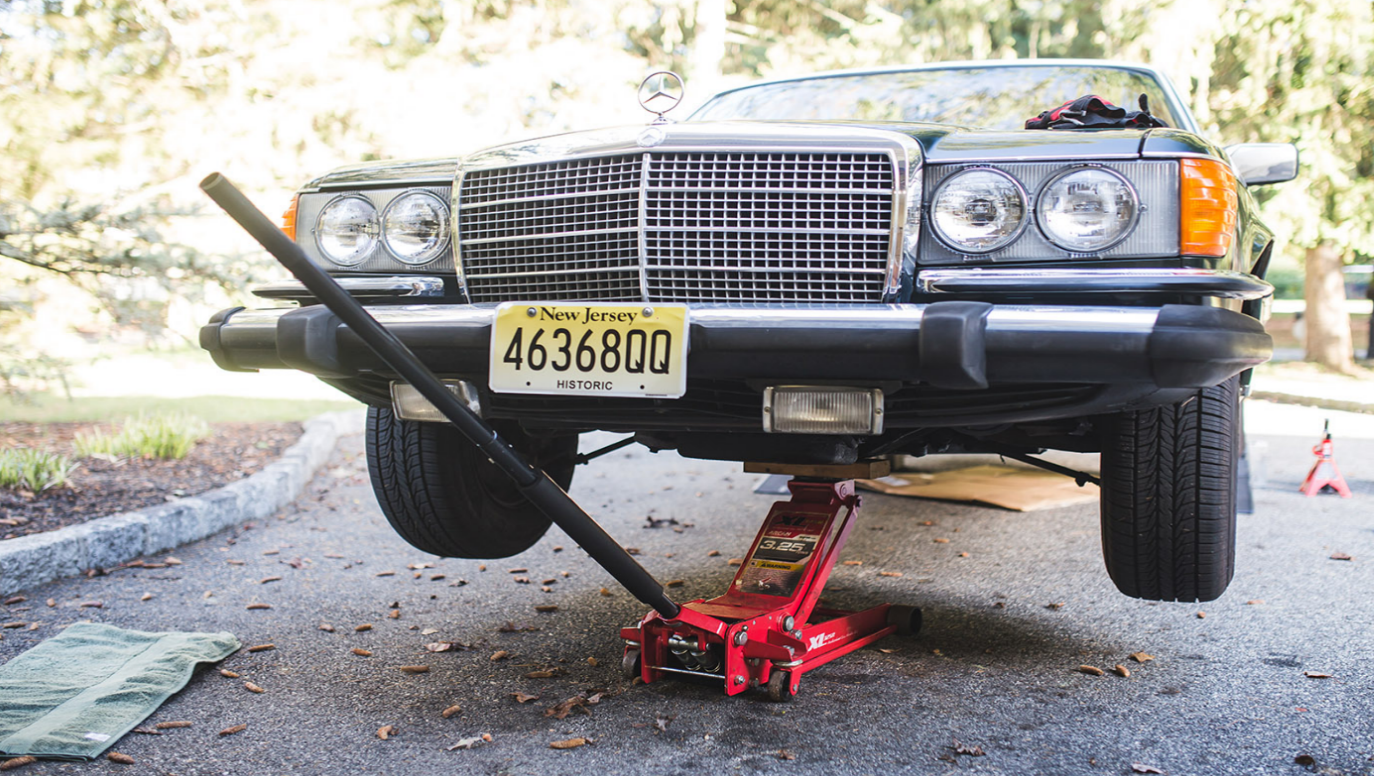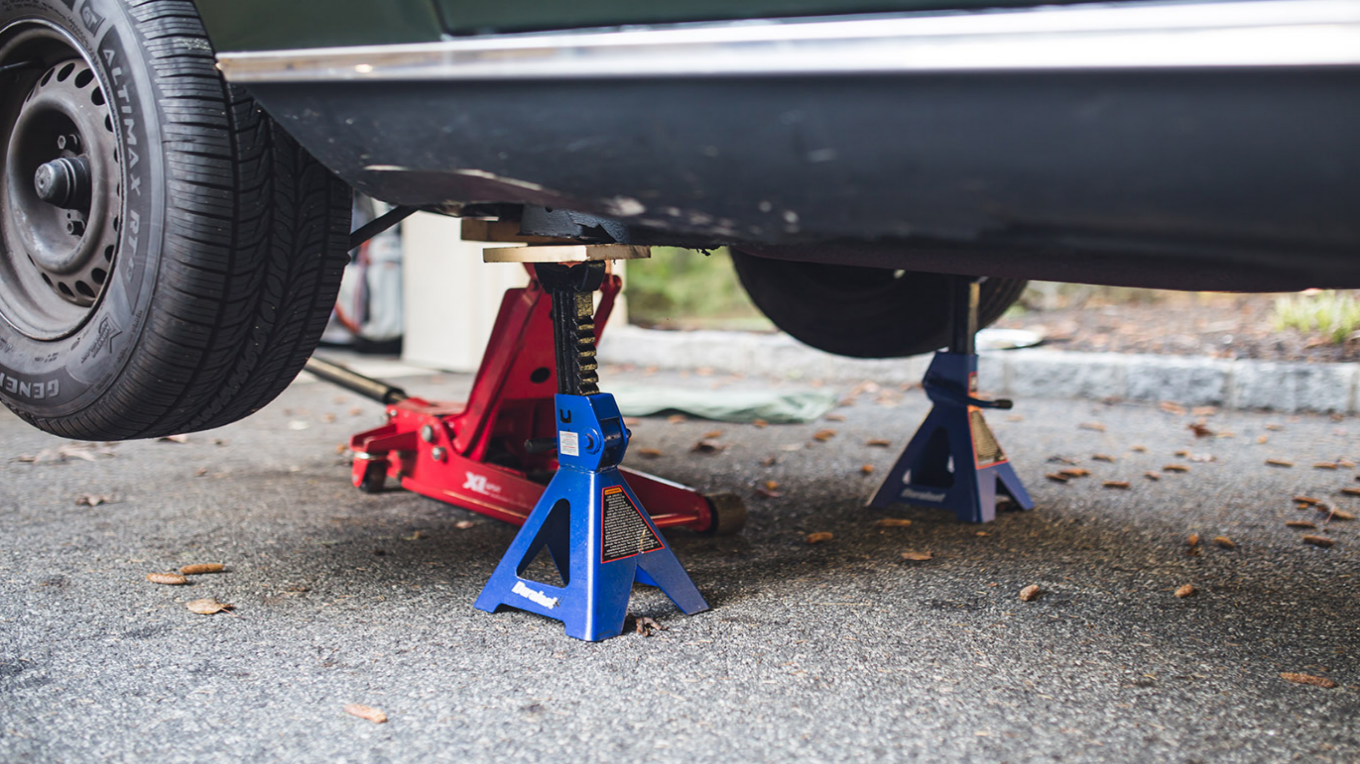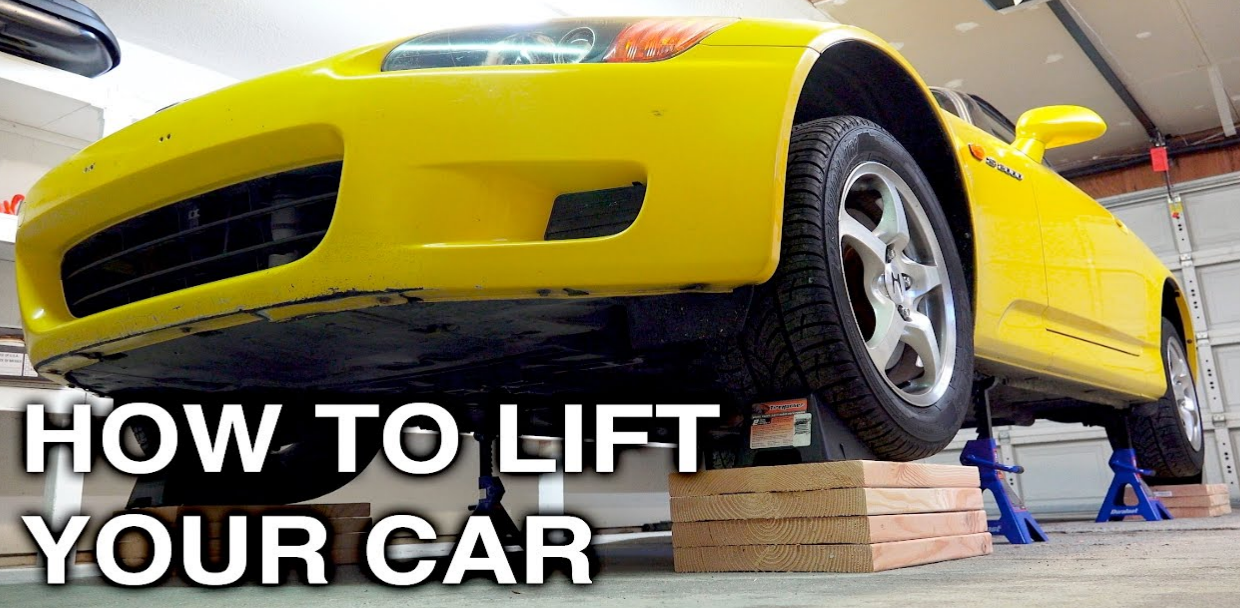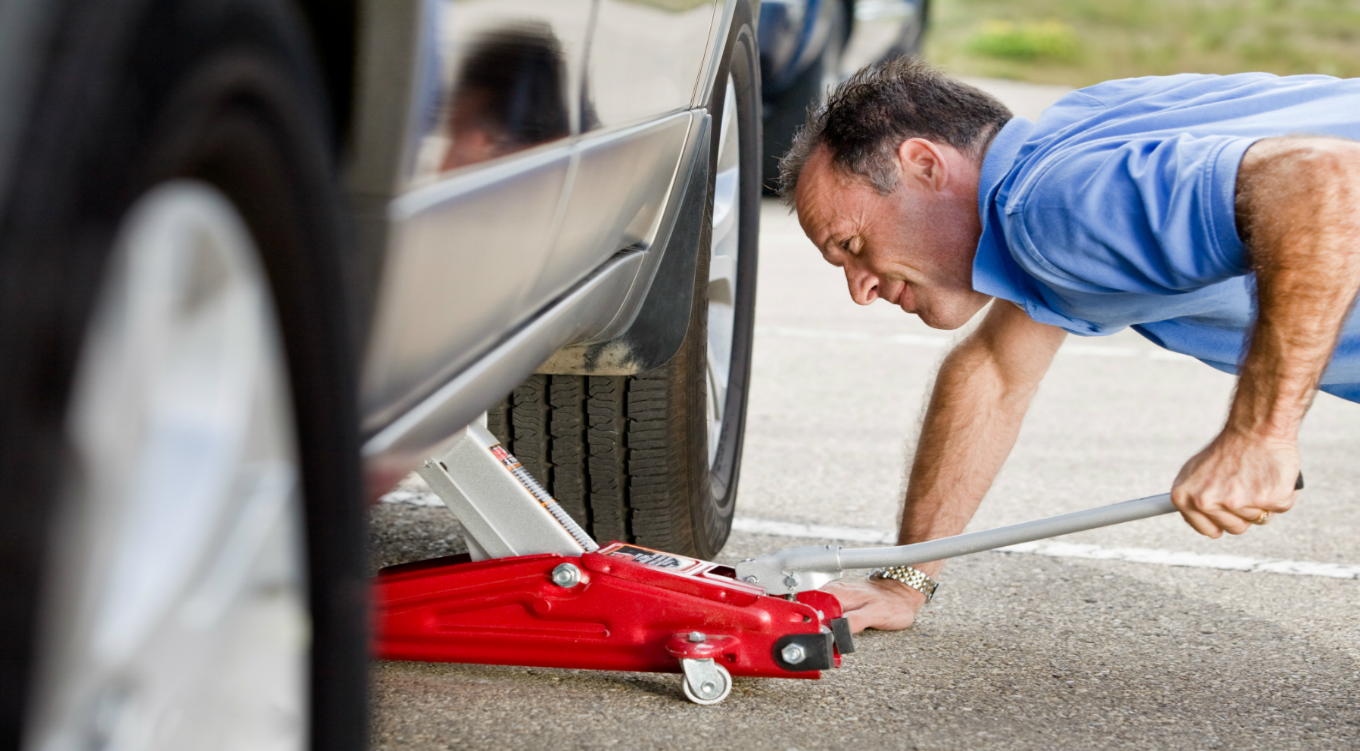Place the jack under a solid car frame point, lift slowly, and ensure it’s secure before working.
Introduction
Jacking up a car might seem like a simple task for many, but it’s vital to understand its importance and the potential risks involved. The process not only requires specific tools but also a solid understanding of the car’s structure and the safety protocols to follow.

Importance of Safely Jacking Up a Car
The primary purpose of jacking up a car is to elevate it off the ground, allowing access to its underside. Whether you’re changing a tire, inspecting the brakes, or doing some other maintenance work, it’s crucial to ensure the car is lifted securely. Incorrectly jacking up a car can lead to severe accidents. For instance, the car could slip from the jack, leading to injuries or even fatalities. Moreover, any mishap could result in damage to the car, leading to additional repair costs.
Furthermore, the quality of the equipment plays a significant role in ensuring safety. A high-quality jack with the appropriate weight capacity can lift a car of specific dimensions and weight efficiently. For instance, if a car weighs 1,500 kg, using a jack designed for a capacity of only 1,000 kg would be a grave mistake, risking both the vehicle and the person operating it.
When You Might Need to Jack Up a Car
There are several scenarios where you might need to elevate your vehicle:
- Tire Replacement: Whether it’s due to a puncture or regular wear and tear, changing a tire is one of the most common reasons. On average, tires have a lifespan of 40,000 to 100,000 miles, depending on the quality and driving conditions.
- Brake Inspection and Replacement: Brakes are vital for safety, and their efficiency can degrade over time. It’s recommended to check them every 10,000 miles. If you experience any change in braking speed or hear unusual noises, it might be time for a checkup.
- Oil Change and Filter Replacement: While many prefer to visit a service center, some car enthusiasts love to change the oil themselves. Typically, an oil change is suggested every 3,000 to 5,000 miles, depending on the oil quality and car specifications.
- Undercarriage Inspection: Sometimes, it’s essential to inspect the bottom of the car, especially after driving through challenging terrains or if you suspect any damage. The undercarriage houses several critical components, and timely checks can save on hefty repair bills later on.
Remember, jacking up a car isn’t just about lifting it. It’s about understanding the importance of the task, ensuring safety, and knowing when and why to do it. Always prioritize safety and use the right equipment to prevent any mishaps.
Safety Precautions
Safety always comes first, especially when dealing with heavy machinery or tasks that can put you at risk. Jacking up a car is no exception. Following the right safety precautions ensures not just your safety but also the longevity and quality of your vehicle. Here’s a detailed look into the essential safety measures to consider.
Preparing the Workspace
Before you even touch the jack, it’s paramount to ensure that the workspace is suitable for the task.
- Surface Selection: Always choose a flat and solid surface. Gravel or soft ground can lead to instability, making it risky to elevate the vehicle. Concrete surfaces are ideal. If you’re on asphalt on a hot day, consider placing a plywood piece under the jack to distribute the weight and prevent sinking.
- Clear the Area: Make sure there’s ample space around the car. Remove any obstacles, debris, or tools lying around. An organized workspace reduces the risk of tripping or misplacing essential tools.
- Lighting: Proper illumination is crucial, especially if you’re working during the evening. A well-lit area ensures you see what you’re doing and reduces the chances of mistakes.
Wearing the Right Safety Gear
Your safety is paramount, and wearing the right gear can make a significant difference in preventing injuries.
- Gloves: A good pair of gloves protects your hands from grease, sharp edges, and provides a better grip on tools. Consider gloves made of durable material like leather or those designed for mechanic work.
- Safety Glasses: When working underneath a car, there’s always a risk of debris or fluids falling. Safety glasses protect your eyes from such hazards.
- Sturdy Shoes: Avoid open-toed shoes or sandals. Wear shoes with a good grip, preferably made of thick material. This ensures that even if something falls, the impact on your feet is minimized.
Checking Car’s Weight and Jack’s Capacity
One of the most crucial aspects of jacking up a car is ensuring that the jack can handle the car’s weight. Overloading can be dangerous.
- Refer to the Owner’s Manual: Every car comes with an owner’s manual that specifies its weight. For instance, a standard sedan might weigh around 1,500 kg, while SUVs can weigh upwards of 2,000 kg.
- Jack Specifications: Always use a jack that can handle more weight than your car’s weight. If your car weighs 1,500 kg, use a jack with a capacity of at least 2,000 kg to ensure safety. Many jacks come with their weight capacity clearly marked, but if not, refer to the manufacturer’s specifications.
In conclusion, safety precautions aren’t just steps to follow; they are the foundation of any repair or maintenance task. They ensure that you complete the job efficiently without compromising your well-being or the vehicle’s integrity. Always prioritize safety, and when in doubt, consult experts or professionals in the field.

Selecting the Right Equipment
Choosing the correct equipment for jacking up a car is paramount not just for efficiency but, more importantly, for safety. Using the wrong tools can result in accidents, damage to the vehicle, and even injury. Here’s a comprehensive guide on selecting the best equipment for the task.
Types of Car Jacks
Different vehicles and situations require various types of jacks. Here are some of the most common ones and their applications:
- Scissor Jack: This is a mechanical jack that uses a lead screw to lift the vehicle. It’s compact and often comes with many vehicles as part of the emergency toolkit. Ideal for light vehicles, it can typically lift weights ranging from 1,000 to 1,500 kg.
- Hydraulic Jack: These jacks use fluid mechanics to lift heavy weights. They offer more stability and can handle heavier vehicles. For instance, a standard hydraulic jack can easily lift vehicles weighing up to 3,000 kg. They are quicker and require less manual effort compared to scissor jacks.
- Bottle Jack: Shaped like a bottle, this is another type of hydraulic jack. It’s powerful and suitable for lifting heavy vehicles like trucks or SUVs. They can range in capacity, with some heavy-duty bottle jacks capable of lifting up to 20,000 kg. However, they are bulkier and might not fit under low-clearance vehicles.
When selecting a jack, always consider the vehicle’s weight and the jack’s lifting height. The jack’s specifications usually provide this information.
Jack Stands and Their Importance
Once a car is jacked up, it’s vital to secure it with jack stands. These stands are tripod- or tower-shaped and are designed to support the vehicle’s weight for extended periods.
- Safety: Jacks are for lifting, not holding. Once a vehicle is elevated, placing jack stands ensures it remains stable and doesn’t fall, preventing accidents.
- Weight Capacity: Just like jacks, jack stands come with weight capacities. For a car weighing 1,500 kg, stands with a capacity of at least 2,000 kg are advisable.
- Material and Quality: Always opt for jack stands made from high-quality steel. They might cost more, but the durability and safety they offer are worth the price.
Using Wheel Chocks
Wheel chocks are wedges placed in front of and behind the tires to prevent the vehicle from moving while it’s jacked up.
- Stability: Even on flat surfaces, a car might roll due to its weight distribution, especially when lifted. Wheel chocks provide an additional layer of safety.
- Material: They are usually made of rubber, plastic, or metal. Rubber chocks provide a good grip, especially on smoother surfaces.
- Size: The chocks should be large enough to prevent the wheel from moving but not so big that they become a tripping hazard. Typically, chocks that are about a quarter of the tire’s height are effective.
In essence, selecting the right equipment is a blend of understanding the vehicle’s requirements and ensuring the highest safety standards. Always prioritize quality over cost, as the right equipment can be the difference between a job well done and a potential mishap.

Step-by-step Guide to Jacking Up a Car
Jacking up a car might seem straightforward, but following a systematic process ensures safety and efficiency. Here’s a detailed step-by-step guide to help you elevate your vehicle without any hitches.
Locating the Car’s Jack Points
Every vehicle has specific points designed to bear the weight when being lifted. These are known as jack points.
- Consult the Owner’s Manual: The manual typically contains diagrams indicating where the jack points are. It’s crucial to use these points as they are engineered to handle the vehicle’s weight without causing damage.
- Visual Inspection: Jack points usually resemble a small notch or indentation along the vehicle’s undercarriage or near the wheels. They are made of sturdy material, often reinforced steel, to bear the weight.
- Safety Note: Never attempt to jack up a car from its bumper, axle, or any other part not designated as a jack point. This can lead to damage and is a significant safety risk.
Positioning the Jack
Once you’ve identified the jack points, the next step is to position the jack correctly.
- Align the Jack: The lifting mechanism or pad of the jack should align perfectly with the jack point. Ensure the jack is perpendicular to the ground for maximum stability.
- Check the Ground: The ground underneath the jack should be flat and solid. If you’re unsure, place a large, flat wooden board under the jack to distribute the weight.
Lifting the Car
With everything in place, you’re now ready to lift the vehicle.
- Raise Slowly: Start lifting the car slowly. Whether you’re using a mechanical or hydraulic jack, ensure smooth and consistent motion. Rapid movements can destabilize the vehicle.
- Monitor Stability: As the car elevates, keep an eye on its stability. If you notice any tilting or shifting, lower it immediately and recheck your jack positioning.
- Lift to Desired Height: Elevate the vehicle to the height required for your task. Ensure it’s not too high, as this can make it unstable.
Placing and Securing Jack Stands
Once the car is lifted, it’s time to secure it with jack stands.
- Position the Stands: Place the jack stands under the vehicle, close to the jack points but not obstructing the jack. Ensure the stands are on solid ground.
- Adjust to Height: Most jack stands are adjustable. Extend them so they’re just short of the car’s undercarriage.
- Lower the Car: Slowly lower the car onto the jack stands. Once the weight is on the stands, give the vehicle a gentle push to ensure it’s stable.
- Double-Check: Before starting any work, double-check that the car is stable on the stands. The car should not wobble or shift when you apply a bit of force.
Jacking up a car requires attention to detail and adherence to safety protocols. Always prioritize safety over speed. And remember, if you’re ever in doubt about any step, consult the vehicle’s owner’s manual or seek expert advice.
Lowering the Car Safely
Once your maintenance or inspection task is completed, the next step is to safely lower the car back onto the ground. Just as lifting the vehicle requires attention to detail, so does lowering it. Here’s a systematic guide to ensure you lower your car without any issues.
Preparing to Lower
Before you start lowering the car, there are a few preparatory steps to ensure safety and efficiency.
- Clear the Workspace: Make sure all tools, parts, and other materials are cleared from under and around the car. Anything left below the car can not only damage the vehicle but also pose a safety risk.
- Inspect the Area: Ensure there’s no debris or obstacles around the jack and the jack stands. This ensures they won’t shift or slip during the lowering process.
- Position the Jack: Reposition the jack under the vehicle, aligning it with the jack point, just as you did while lifting.
Removing Jack Stands
With everything in place, it’s time to remove the jack stands.
- Raise the Car Slightly: Use the jack to lift the car just enough to take the weight off the jack stands.
- Remove Carefully: Once the weight is off the stands, carefully remove them from under the vehicle. Ensure you have a firm grip and pull them away horizontally to avoid any tilting or toppling.
- Inspect the Ground: Before lowering the car, once again ensure that the ground below is free of any tools, debris, or other objects.
Lowering the Car Gently
Lowering the car is a delicate process and should be done with utmost care.
- Lower Slowly: Start by lowering the car very slowly. Whether you’re using a mechanical or hydraulic jack, a slow and steady motion ensures safety.
- Monitor the Car’s Descent: As you lower the vehicle, watch its descent to ensure it’s smooth and even. If you notice any jerks or rapid movements, stop immediately and investigate the cause.
- Fully Lowered: Once the car is back on the ground, gently push on its body to ensure it’s stable. Also, check the tires to ensure they’re correctly inflated and in good condition after the maintenance.
In conclusion, while it might seem straightforward, lowering a car requires as much attention and care as lifting it. Always prioritize safety, and if unsure about any step, refer to the owner’s manual or consult an expert. A few extra minutes spent on ensuring safety can prevent potential mishaps.
Maintenance and Care for Jacks
Just like any other tool or equipment, car jacks require regular maintenance and care to ensure longevity and safe operation. A well-maintained jack not only functions efficiently but also reduces the risk of malfunctions that could lead to accidents. Here’s a detailed guide on how to keep your jack in top condition.
Regularly Checking the Jack for Damage
Routine inspections are crucial to identify any early signs of wear, tear, or damage.
- Visual Inspection: Periodically, take a close look at your jack. Check for visible signs of rust, cracks, or any bent parts. Ensure that the lifting mechanism, whether it’s a screw or hydraulic piston, shows no signs of damage.
- Functional Test: Every few months, or before a significant usage, test the jack by lifting a weight close to its maximum capacity. This will help identify any performance issues. For instance, if a hydraulic jack isn’t lifting smoothly or is losing pressure, it might need repairs.
- Listen for Noises: During operation, pay attention to any unusual sounds. Creaks, pops, or grinding noises can indicate problems.
Properly Storing the Jack
How you store the jack when it’s not in use plays a significant role in its lifespan.
- Clean Before Storing: Wipe off any grease, dirt, or fluids from the jack before putting it away.
- Dry Location: Always store the jack in a dry place. Exposure to moisture can lead to rust, which weakens the jack’s structure. If the jack has a hydraulic mechanism, moisture can also affect its performance.
- Avoid Overloading: When storing, ensure that the jack isn’t bearing any weight. For hydraulic jacks, release the pressure before storing.
- Cover: If possible, use a cloth or specially designed cover to protect the jack from dust and dirt.
Lubrication and Cleaning
Keeping the jack clean and well-lubricated ensures smooth operation and reduces wear.
- Cleaning: Use a cloth to wipe down the jack after every use. For a deeper clean, consider using a degreaser or a cleaner suitable for metal parts. This will help remove grime, grease, and any accumulated dirt.
- Lubrication: Depending on the jack type, different parts might need lubrication. For scissor jacks, the lead screw should be lubricated regularly. For hydraulic jacks, the piston and other moving parts benefit from periodic lubrication. Use a high-quality lubricant designed for heavy machinery or automotive use.
- Hydraulic Fluid Check: For hydraulic jacks, ensure the hydraulic fluid is at the recommended level. If the fluid appears dirty or has debris, consider replacing it.
In conclusion, the lifespan and efficiency of a car jack heavily depend on its maintenance and care. Investing time in routine checks and proper storage can save you from unexpected expenses and potential dangers in the future. Always remember that a well-maintained jack is a safe jack.
Common Mistakes to Avoid
When jacking up a car, it’s as essential to know what not to do as it is to understand the proper steps. Even small oversights can lead to significant safety risks or damage to the vehicle. By being aware of common mistakes, you can ensure a safe and efficient process. Here’s a breakdown of frequent errors and how to steer clear of them.

Not Using Jack Stands
Using jack stands might seem like an additional step, but their importance cannot be overstated.
- Risk of Collapse: Jacks, especially hydraulic ones, can lose pressure over time. If a car is only supported by a jack, there’s a risk of it collapsing, which can lead to severe injuries and damage to the vehicle.
- Safety First: Always use jack stands after elevating the car. They are designed to hold weight for extended periods and provide a stable base. For a car weighing around 1,500 kg, using stands with a weight capacity of at least 2,000 kg ensures an added safety margin.
Jacking Up on an Uneven Surface
The surface on which you jack up the car plays a pivotal role in the safety of the entire process.
- Risk of Tipping: Jacking up a car on an uneven or unstable surface, like gravel or soft ground, can lead to the vehicle tipping or the jack sinking. This instability can be dangerous, especially when working under the car.
- Use a Base: If you’re unsure about the surface, placing a large, flat wooden board or a metal plate under the jack can provide additional stability. This distributes the weight and reduces the risk of the jack sinking or tilting.
Overloading the Jack
Every jack has a weight limit, and it’s essential to adhere to it.
- Damaging the Jack: Exceeding the jack’s weight capacity can lead to permanent damage. For instance, a hydraulic jack might leak fluid or fail to lift altogether in the future.
- Safety Hazards: Overloading can lead to sudden failures. The jack might break or bend, causing the car to fall unexpectedly.
- Check Specifications: Always refer to the jack’s specifications to know its weight limit. For a car that weighs 1,500 kg, using a jack with a capacity of at least 2,000 kg is a wise choice. This ensures you’re not pushing the jack to its limits and provides an added safety buffer.
In conclusion, while jacking up a car might seem straightforward, it’s a process that demands respect and careful attention. By avoiding these common mistakes, you not only ensure your safety but also prolong the life of your tools and vehicle. Always prioritize safety, and when in doubt, consult the vehicle’s owner’s manual or seek expert advice.
Conclusion
Lifting and lowering a car may appear as simple tasks, but as we’ve explored, they require a combination of the right tools, knowledge, and a keen emphasis on safety. Let’s recap the vital points and conclude our guide.

Recap of Key Points
- Equipment Selection: The importance of choosing the right jack tailored to the weight and specifications of the vehicle is crucial. From scissor jacks suitable for lighter vehicles to hydraulic jacks for heavier loads, ensuring the equipment matches the car’s weight ensures efficient lifting.
- Safety Precautions: Before even beginning the process, preparing the workspace, wearing the appropriate safety gear, and understanding the vehicle’s weight are fundamental steps.
- Proper Lifting and Lowering: Identifying the correct jack points, positioning the jack accurately, and using jack stands to secure the elevated vehicle are non-negotiable steps in the process.
- Maintenance: Like all equipment, jacks require regular care, from checking for damages and proper storage to routine cleaning and lubrication.
- Avoiding Mistakes: Awareness of common mistakes, whether it’s neglecting the use of jack stands, jacking up on an unstable surface, or overloading the jack, can prevent potential mishaps.
Emphasis on Safety
The recurring theme throughout this guide has been safety. Whether you’re a seasoned mechanic or a car owner trying to change a tire, safety should never be compromised.
- Safety Gear: Always wear appropriate protective equipment, such as gloves, safety glasses, and sturdy shoes, to reduce the risk of injuries.
- Vehicle Stability: Ensuring the vehicle’s stability, both when elevated and on the ground, is paramount. Using tools like wheel chocks and always operating on a flat surface are essential practices.
- Maintenance: Regularly inspecting and maintaining your jack and related tools is not just about prolonging their life but ensuring they function safely.
In the world of automotive maintenance and repair, where variables like weight, pressure, and mechanical forces come into play, there’s no room for shortcuts or oversight. Every step, every check, and every precaution is a commitment to safety. Always remember: it’s better to take an extra minute for safety than risk an accident.
